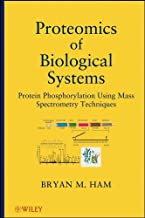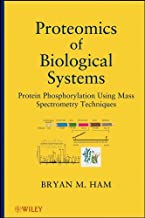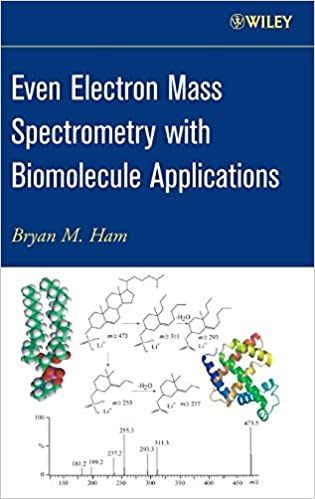Dr. Bryan Ham is a professional analytical chemist, an analytical chemistry instructor, mass spectrometrist, chemistry book author, and software coder (VB.Net and VBA for MS Access and Excel). He has worked in analytical chemistry laboratories for over 25 years including environmental, petrochemical (monomers/polymers), petroleum, foodstuff, and life sciences research, giving him a very broad background in analytical chemistry analysis, instrumental analysis, and laboratory management. He has a BA in Chemistry, and a Ph.D. in Analytical Chemistry. He has published 15 research papers in peer reviewed journals, two encyclopedia chapters in the Kirk-Othmer Encyclopedia of Chemical Technology, and three analytical chemistry books: the first an intro to mass spectrometry: Even Electron Mass Spectrometry with Biomolecule Applications, John Wiley & Sons, Inc., 2008, the second covers proteomics: Proteomics of Biological Systems: Protein Phosphorylation Using Mass Spectrometry Techniques, John Wiley & Sons, Inc., 2012. His third most recent book is an analytical chemistry book (used in this course) that also contains two programs on a CD in the back cover that he has written: Analytical Chemistry: A Chemist and Laboratory Technician’s Toolkit, John Wiley & Sons, Inc., 2016. The first program is a standalone software package called ChemTech which is a chemist toolkit written in Visual Basic. The second program is a Laboratory Information Management Software written in Visual Basic for Applications specifically Microsoft Access database software. He is currently a Forensics Scientist for the Department of Homeland Security at the U.S. Customs and Border Protection New York Laboratory. He is a member of the American Society of Mass Spectrometry (ASMS) and the American Chemical Society (ACS). His interests include teaching the fundamentals of analytical chemistry and instrumental analyses as applied to modern analytical laboratories. |
Dr. Aihui MaHam is a professional analytical chemist, an analytical chemistry instructor, and a chemistry book author. She is an expert in the field of inorganic materials chemistry, and their characterization. She specializes in inorganic instrumental analyses utilizing scanning electron microscopy (SEM), x-ray diffraction and x-ray fluorescence spectroscopy (XRD/XRF), inductively coupled plasma optical emission spectroscopy (ICP-OES), and low and high resolution ICP-mass spectrometry (ICP-MS). She has a BS in Chemistry Education, an MSc in Physical Chemistry, and a Ph.D. in Analytical Chemistry. She also specializes in nano-materials including the synthesis and characterization of chemical and biological nano-sensors. She has published numerous research papers including a recent review in the journal Small entitled Protein-Based Nanomaterial Platforms for Drug Delivery, which has been widely cited over 500 times by researchers in her field. She also co-authored the current course’s textbook: Analytical Chemistry: A Chemist and Laboratory Technician’s Toolkit, John Wiley & Sons, Inc., 2016. She is currently a Forensic Scientist for the Department of Homeland Security at the U.S. Customs and Border Protection New York Laboratory. Her current interests include the application of instrumental analyses to the modern analytical laboratory.
|
Other books by the authors:
Introductory Mass Spectrometry Book
Mass spectrometry is a rapidly changing field of science that has experienced substantial development of new instrumentation along with increased applications in the area of biomolecule analysis. This book is addressing these new aspects by presenting the latest developed mass spectrometers and ionization techniques. The greater majority of mass spectral analysis of biomolecules in the laboratory today use ionization sources that produce even electron ions as opposed to odd electron ion spectra. Traditionally, mass spectral interpretation books have focused solely on the treatment of odd electron spectra generated from electron ionization (EI) sources. While electron ionization is still used to some extent the majority of ionization techniques used in today’s mass spectrometers incorporate sources that generate even electron ions. Furthermore, techniques such as electrospray ionization and matrix assisted laser desorption ionization are soft ionization techniques that produce primarily intact ions as opposed to the EI source where the molecular ion is often depleted and not observed spectrally. Even electron ions give a mass-to-charge ratio (m/z, molecular weight plus weight of adduct divided by the charge) of the biomolecule being analyzed, which is often subjected to collision induced dissociation to produce an even electron product ion spectrum that is used for structural elucidation and unknown identification.
The book is also a combination of the detailed step-by-step methodology for mass spectral interpretation that is coupled to a complete coverage of mass spectrometry and the fundamentals that underlie this extremely useful but complex subject. For the interested researcher or student mass spectrometers are complicated instrumentation and the field of the application of mass spectrometry to biomolecule analysis is broad, complex, and can be intimidating. The book fills a need for a comprehensive understanding of mass spectrometry in conjunction with an easily understandable methodology for spectra interpretation and structural elucidation. While the book does give a complete basic coverage of odd electron spectral interpretation which is the focus of most mass spectrometry books used in classroom study (see Chapter V), its main focus is upon even electron ion mass spectral interpretation. The book can be used in mass spectrometry classes giving the students a more up to date application of mass spectrometry. It can also be used by individuals who have had the traditional classroom introduction to mass spectrometry but who are interested in reviewing the subject and applying the technique of mass spectrometry to biomolecule analysis which is now one of the major applications of mass spectrometry in research and industry. Upon reading and understanding this book one can easily apply what is learned to the mass spectrometric analysis of daily routine work and to high level research interpretation.
An introduction to mass spectrometry in conjunction with pertinent fundamentals to lay a foundation in which to build upon in later chapters is presented in Chapter I. In Chapter II ionization techniques and sources including electron ionization and the more current soft ionization techniques of electrospray ionization and matrix assisted laser desorption ionization at a fundamental level for an in-depth and comprehensive understanding of the ionization methods used in mass spectrometry. In Chapter III the basics of the most commonly encountered mass analyzers geared towards a fundamental course in mass analyzer theory at either the undergraduate or graduate level. Gas-phase reaction rate theory and collision theory are covered in Chapter IV to give a basic understanding behind gas-phase unimolecular reactions such as collision induced dissociation (CID) that produce product ion spectra. A main focus of the book is presented in Chapters V and VI to teach how to analyze mass spectra for unknown structure elucidation and identification. The approach presented uses techniques such as initial discussion of sample origin and spectra origination, the application of reasonable fragmentation pathways and product ion structures. The teaching approach is to take structures of known compounds and break them apart into their basic building blocks in a kind of “exploded” representation and then relate this to a product ion spectrum by matching reasonable structures to the masses of the product ions produced in the collision induced dissociation experiments. The following chapters are devoted to areas of biomolecule analysis by mass spectrometry including the analysis of proteins (Chapter VII), small molecule analysis (Chapter VIII), biopolymers (Chapter IX), and finally a detailed look at the post source decay MALDI TOF/MS analysis of phosphorylated lipids including spectral interpretation (Chapter X).
 Introductory to Mass Spectrometry Proteomics
Introductory to Mass Spectrometry Proteomics
This book is a review of post translational modification (PTM) of proteins including a special focus on a collection of mass spectral studies of phosphorylation as a post translational modification of both eukaryotic and prokaryotic proteomes utilizing the most recent advances and approaches in analytical chemistry. Protein post translational modification studies have now been studied for over 30 years in recognition of its importance in cellular processes. In particular, the study of protein phosphorylation as a post translational modification has received much attention in the last 5 years. The timing of this book is in accordance with the new advances in protein phosphorylation studies. A major focus of the book is in the first time reporting of the study of prokaryote phosphoproteomes, in particular the extensive study of the phosphorylation of the histidine residue that is extremely important in prokaryote signaling processes, with very little or no examples previously reported. The focus of the measurement of the phosphoproteomes is based upon state of the art mass spectrometry instrumentation and techniques. Also discussed are specific methodology for performing PTM phosphoproteome studies which includes from cell cultures, through important steps during sample preparation, instrumental analysis using the most recent mass spectral approaches, the handling of the extensive data collected, and finally recent tools available to the scientific community free of charge on the internet currently being used to help understand and interpret the extensive and complex data collected during these studies. The data reduction approach utilizes the current “systems biology” viewpoint to rationale the observations. The primary focus of the book is to teach the basic skills and methodologies needed for studies of phosphorylation as a post translational modification of proteins using real life examples of actual phosphoproteome studies of both eukaryotic and prokaryotic systems. The book is a mixture of the fundamentals of sample preparation, nano-liquid chromatographic separation/nano-electrospray ionization, tandem mass spectrometry instrumental analysis followed by bioinformatic data interpretation concerning phosphoproteome studies.
The book is presenting a number of first time observations and studies involving the phosphoproteomes of prokaryotes. This is a subject area that is timely and new with few previous examples in the literature. There is currently an overwhelming need and interest in the scientific community concerning phosphoproteomic studies of prokaryotic systems. This involves both the normal type of phosphoproteomes that are studied in eukaryotic systems and the novel areas of phosphorylation observed in prokaryotes. Researchers are currently applying the phosphoproteomic approaches that have now been well optimized in eukaryotic systems to those of prokaryotic systems, and examples of these types of studies are presented in the book. However, the tremendously challenging area of phosphorylation of the histidine residue or “phosphohistidine proteomes” of prokaryotes has just begun to be studied. The book presents numerous first time studies of this current topic of interest that has not been observed nor reported yet anywhere in the literature. The book describes the in-vitro synthesis of phosphohistidine containing peptides along with the mass spectral characterization of the peptides.
Specifically, the book presents optimized methodologies for performing both eukaryotic phosphoproteome studies and prokaryotic phosphoproteome studies. The materials presented in the book are tried and tested sample preparation and analysis methods and approaches. While this can be collected in the literature for eukaryotic systems through exhaustive and time consuming searches, the book has compiled the most recent approaches into one place. The methodologies that are presented for prokaryotic systems are however novel and new, and not available in the literature in a systematic approach as presented in the book. In fact, the book is reporting prokaryotic study approaches that have not previously been reported before. This covers a new and quite challenging area of phosphohistidine prokaryote phosphoproteome studies. The book also presents methodologies for time-based studies of a prokaryote model that is undergoing a food starved environment study. This is a first ever reported quantitative differential study of a prokaryotic system under perturbed conditions. All studies reported in the book are actual laboratory experiments giving step-by-step sample preparation protocols using laboratory bench top methodologies and the most recent vendor optimized kits. For example, an immunoprecipitation study of phosphorylated tyrosine enrichment is described along with the associated mass spectral instrumental analysis results.
The work and studies reported in the book can be an invaluable asset to the student and the researcher due to the combination of detailed step-by-step methodology for phosphoproteomic sample preparation, mass spectral instrumental analysis, and data interpretation approaches. The book also includes the use of some of the most recent systems biology bioinformatic internet tools such as the Blast2GO gene ontology (GO) tool. Also described are the most recent data processing approaches that have been developed by Dr. Richard Smith’s proteomics group at Pacific Northwest National Laboratory. The book is also an extensive reference concerning cell signaling studies associated with phosphorylation of proteins.






